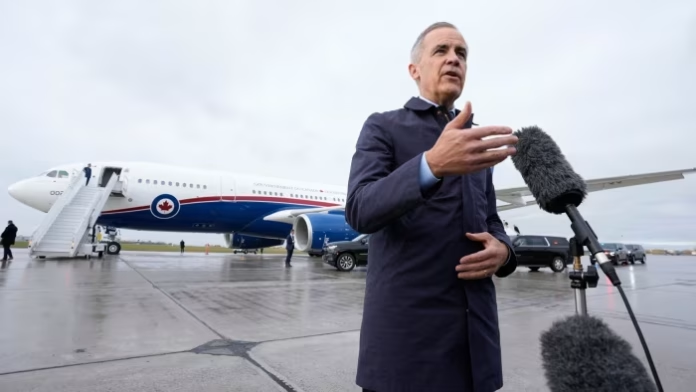Unlock the Editor’s Digest for free
Roula Khalaf, Editor of the FT, selects her favourite stories in this weekly newsletter.
Mark Carney begins his first trip to Asia as Canadian prime minister at the weekend, hoping the region can help him cut his country’s economic dependence on the US by doubling its trade with the rest of the world.
“We are re-engaging with the global giants India and China,” Carney said this week as he announced the target of increasing trade with non-US partners by almost $300bn over a decade.
Canada’s goods trade with the Indo-Pacific was worth C$261bn in 2024, accounting for about 18 per cent of its global trade but dwarfed by its C$1.3tn in annual trade with the US.
US President Donald Trump announced on Thursday that he had ended trade talks with Canada in retaliation for an anti-tariff advertising campaign launched by the province of Ontario.
“We can’t control the trade policy of the United States,” Carney told reporters on Friday before his departure. “What we can control is developing new partnerships and opportunities, including with the economic giants of Asia.”
Carney, who has already made four trips in five months to Europe, has been seeking to improve Ottawa’s uneasy relations with Beijing and New Delhi and is seeking deals with Indo-Pacific partners in sectors including energy, critical minerals, beef and dairy and artificial intelligence.
The prime minister will travel to Malaysia for a summit of the Association of Southeast Asian Nations from Sunday and will then visit Singapore before heading to a gathering of the Asia-Pacific Economic Cooperation forum in South Korea from October 29.
He is expected to meet Chinese President Xi Jinping on the sidelines of the Apec summit and will visit the South Korean shipyard operated by Hanwha Ocean that is competing to build 12 submarines for Canada’s navy.

Goldy Hyder, president of the Business Council of Canada, who is travelling with the prime minister’s delegation, said companies were “eager to see concrete steps that turn dialogue into action, unlock new markets and attract investment”.
Carney and Chinese Premier Li Qiang in June agreed to “regularise channels of communication” and resume a Joint Economic and Trade Commission after a seven-year pause.
But China announced devastating tariffs on Canada’s canola industry in August and has put new duties or bans on food products such as seafood and beef. The moves by Beijing were in response to a raft of Canadian measures taken against China intended to align Ottawa closer with the US.
Bijan Ahmadi, executive director of the Canada China Business Council, said that despite the trade friction, the bilateral relationship was “undergoing a much-needed recalibration”.
“As Canada’s second-largest trading partner, China remains vital to the country’s international trade and long-term competitiveness,” he said.
In June, India and Canada reset their diplomatic relations, ending a two-year rift triggered by accusations of New Delhi’s involvement in the killing of a Canadian Sikh activist.
Vina Nadjibulla, vice-president of research and strategy at the Asia Pacific Foundation of Canada, said Carney was “reimagining Canada’s foreign policy”.
“Old assumptions are no longer holding, so we need to change the way we approach the world; it’s pragmatic diplomacy,” she said.
But some observers say Carney faces big challenges in maintaining current relationships in Asia, never mind dramatically expanding them.
“Canada is regarded as a lightweight that is good at occasional trips but poor at follow-up and strategic relationship development,” said Bob Pickard, a former head of communications at the Beijing-headquartered Asian Infrastructure Investment Bank.
Pickard abruptly left the AIIB in 2023, alleging that the Chinese Communist party ran the bank from the shadows. The AIIB denied the allegations and an internal review found “no evidence of undue influence” on its board or management decisions.















